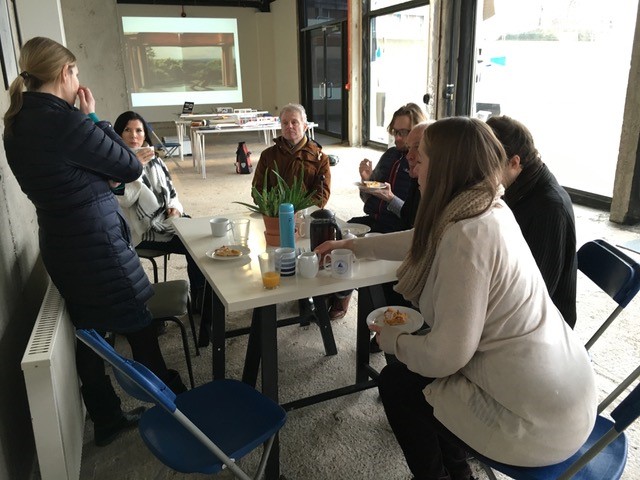Park Hill Workshop
Park Hill Final Workshop and Film launch event.
The Workshop
The workshop was attended by 11 residents for 2 1/2 hours.
We walked around the whole of Park Hill as it was dusk and discussed external spaces and their hopes for the future community facilities, what they were doing as the residents’ community and what they felt about the public space.
We discussed the last major ng workshop which these residents could not attend and what they felt was most important to them.
A number of interesting things came out of this walk around and
We then went to one of the new office spaces in Park Hill and had refreshments and a more structured discussion. Two of the project architects came from Hawkins Brown to answer questions from the residents and from us the workshop leaders.
The film launch and panel discussion
We then all walked together from Park Hill to the Millennium gallery and arrived for the film event. This allowed for more informal discussion of the place Park Hill has in the area around the station and how near it is to the city centre. There were well over 100 hundred people at this event, previous residents from Park Hill, interested parties and clearly academics and students from the university. One of the key findings for us from this event was the divided responses from the audience. The workshop was taped and some good comments elicited.
Publication
This and the previous major workshop (described below) funded by the AHRC were written up as a chapter -Co-designing for a better future: re-imagining the modernist dream at Park Hill, Sheffield in the AHRC funded book Co-producing Research Edited by: Sarah Banks, Angie Hart, Kate Pahl and Paul Ward Published by The Policy Press, University of Bristol, published by Policy Press 2019
Previous workshop (funded by the AHRC)
Drawing on the experience of co-design on the ‘Imagine’ project we look at how making and creating together can be understood as a form of re-imagining. We argue that making is a creative impulse that creates opportunities to think about how things could be otherwise (Ingold 2013). In many of our co-produced projects we have drawn on a more materially situated, sensory and embodied form of co-design as a mode of thinking (Carter 2004). Material knowledge is common within community contexts, but not often drawn upon by academics. We present an active account of our experiments in making and co-design to inform the ‘Imagine’ methodology and create a vision of co-production as community development from a design perspective.
